WEnRV travel news, products, and industry trends
Hiking Great Smoky Mountains National Park
Great Smoky Mountains National Park is one of the best hiking destinations in eastern Tennessee and western North Carolina. While it can be quite busy during the summer, many people believe that the changing colors and cooler temperatures make fall the best time to hike in the park.
Because the park covers a total of more than 522,000 acres, you will have many routes to choose from if you want to hike in the Smokies. Today, we are going to highlight five very different options for hiking Great Smoky Mountains National Park that will give everyone from beginners to experts something to enjoy during their trip.

View from the Appalachian Trail Loop. Photo: Getty Images
Appalachian Trail Loop From Newfound Gap to Charlie’s Bunion
Distance: 8.1 miles Trail Type: Out and back Elevation Gain: 1,640 feet Difficulty: HardWhile you might not initially like the idea of making a bunion your primary hiking destination, no visit to the Smoky Mountains is complete without setting foot on the Appalachian Trail. The trailhead for this hike is located at Newfound Gap on the border of Tennessee and North Carolina.
Be prepared for a nice climb to start the first two miles of this hike, but make sure you lift your head up to appreciate the foliage from time to time. During the spring and summer, wildflowers line the trail and the changing colors of fall are definitely a sight to see.
You will find the spur to the doorway to Charlie’s Bunion at mile 4, which is definitely worth it for the views. If you want to turn this hike into an overnight trip, you can even get a permit to stay at the Ice Water Spring Shelter and then get up early to catch sunrise views from the bunion!
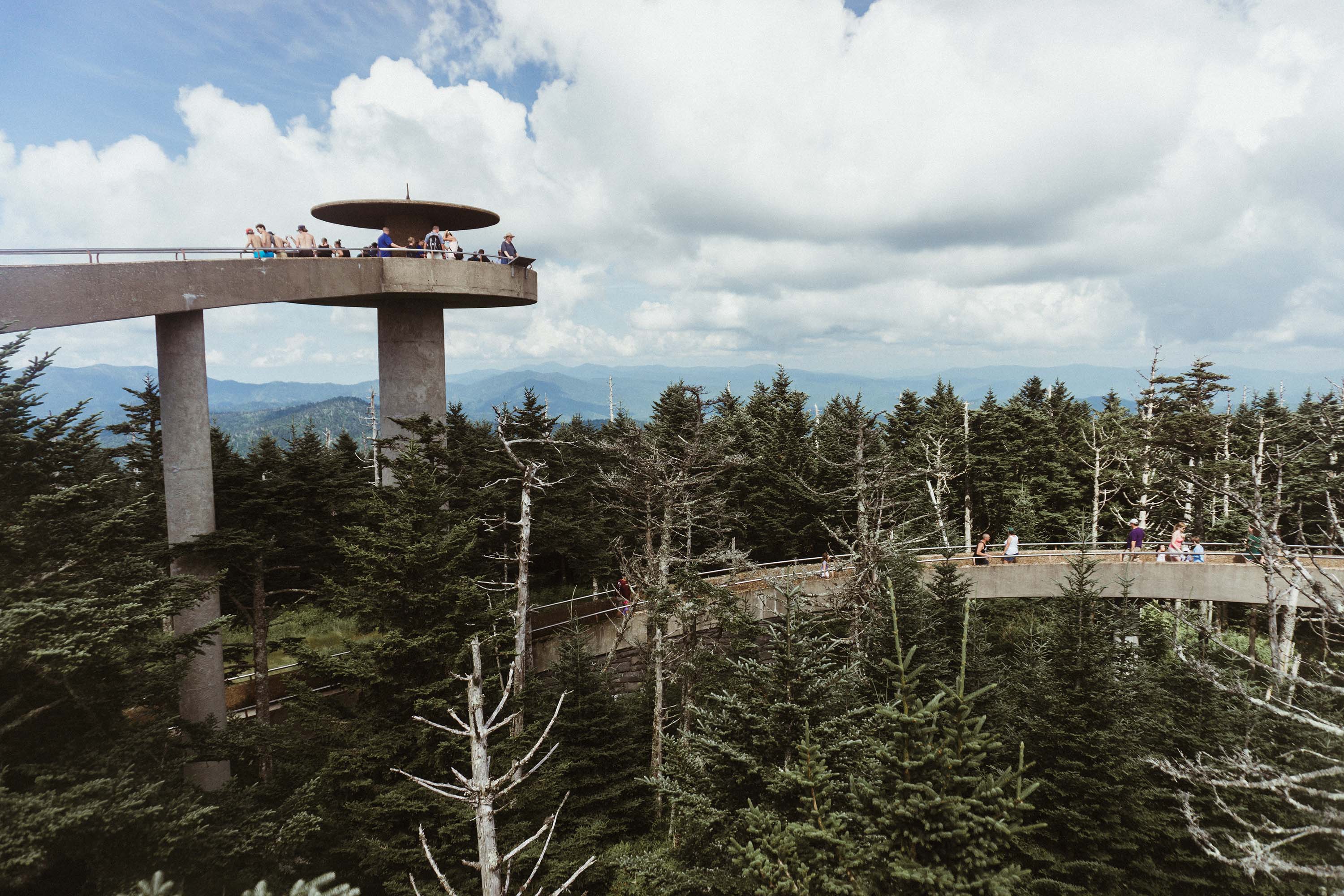
Clingman’s Dome observation tower. Photo Kirk Thornton/Unsplash
Clingman’s Dome
Distance: 1.2 miles Elevation Gain: 334 feet Trail Type: Out and back Difficulty: EasyClingman’s Dome is easily the most popular attraction in the park. It is the highest point in the park and the observation tower that has been built there offers 360-degree views of the mountains. It is a great option for a quick sunrise or sunset hike between other park activities.
Be prepared to share the views with plenty of other visitors during your visit to Clingman’s Dome. Because of the views and the relatively easy hike required to get there, this trail is often quite crowded and you may not get to hike at your regular pace.
Still, this hike is worth a quick stop if you haven’t been to the park before and there is even a visitor’s center at the trailhead if you want to grab a ranger’s attention to answer any questions. You can also do the Clingman’s Dome hike and then hop on the Appalachian Trail in either direction from here if you want to extend your day.
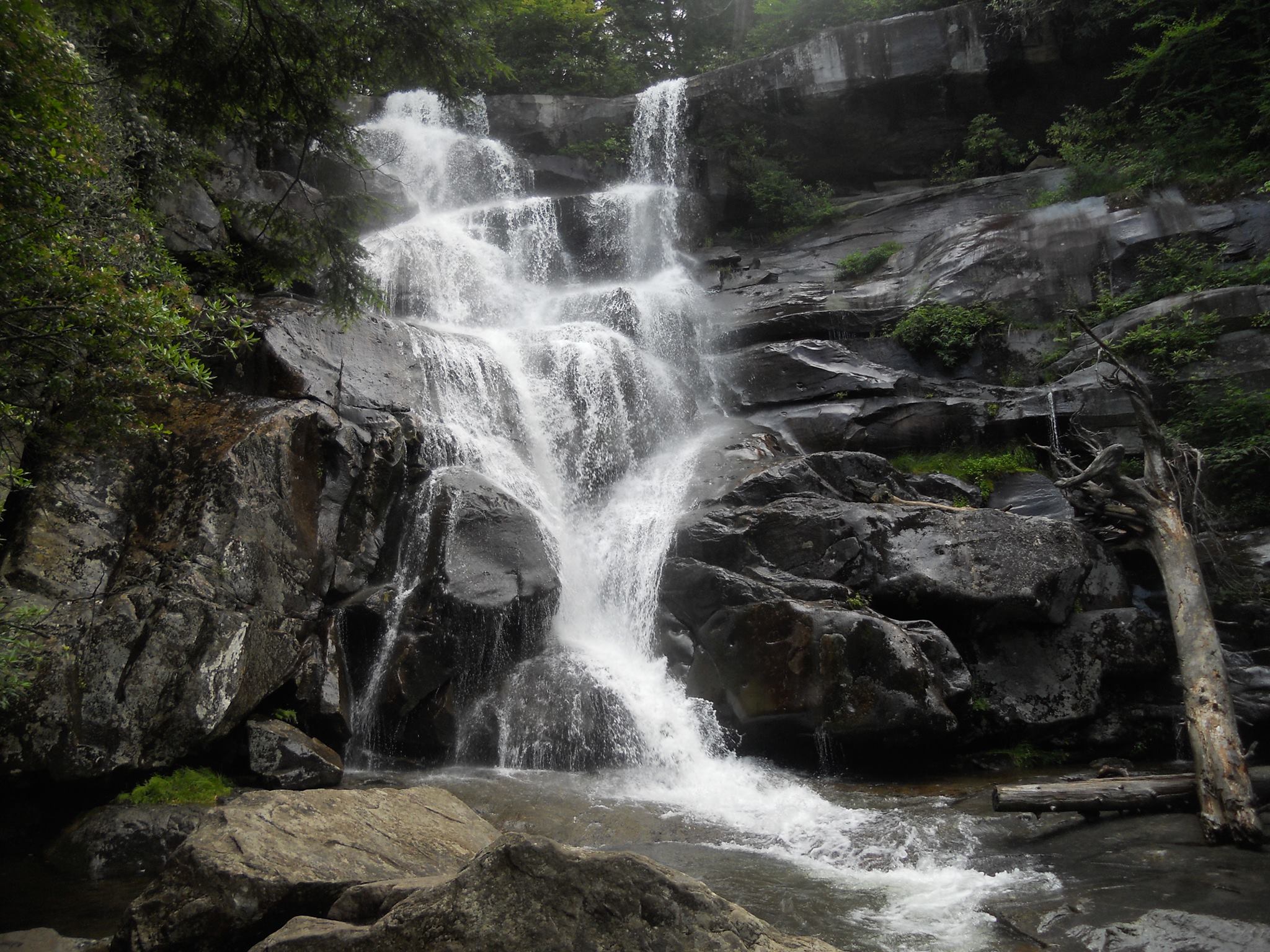
Ramsey’s Cascade. Photo: Andrea Walton
Ramsey Cascades
Distance: 7.8 miles Elevation Gain: 2,190 feet Trail Type: Out and back Difficulty: HardRamsey Cascades is the tallest accessible waterfall in Great Smoky Mountains National Park. While there may be others that top the 100-foot height of these cascades, this waterfall is the largest that you can comfortably reach on foot using a developed trail.
The hike to get there is both lengthy and quite strenuous, but you can usually cool off in the small pool at the bottom of the falls once you get there. The strength of the falls will depend on the time of year that you visit and the amount of seasonal snow and rainfall that the park has experienced recently.
The spring months are usually the best time to see the waterfall in its most powerful form. However, this hike is absolutely magnificent in the fall as well. The leaves of the diverse trees along the trail (silverbells, yellow birch, tulip, and basswoods) turn the typically green forest into a warm landscape of reds and oranges in the fall months.
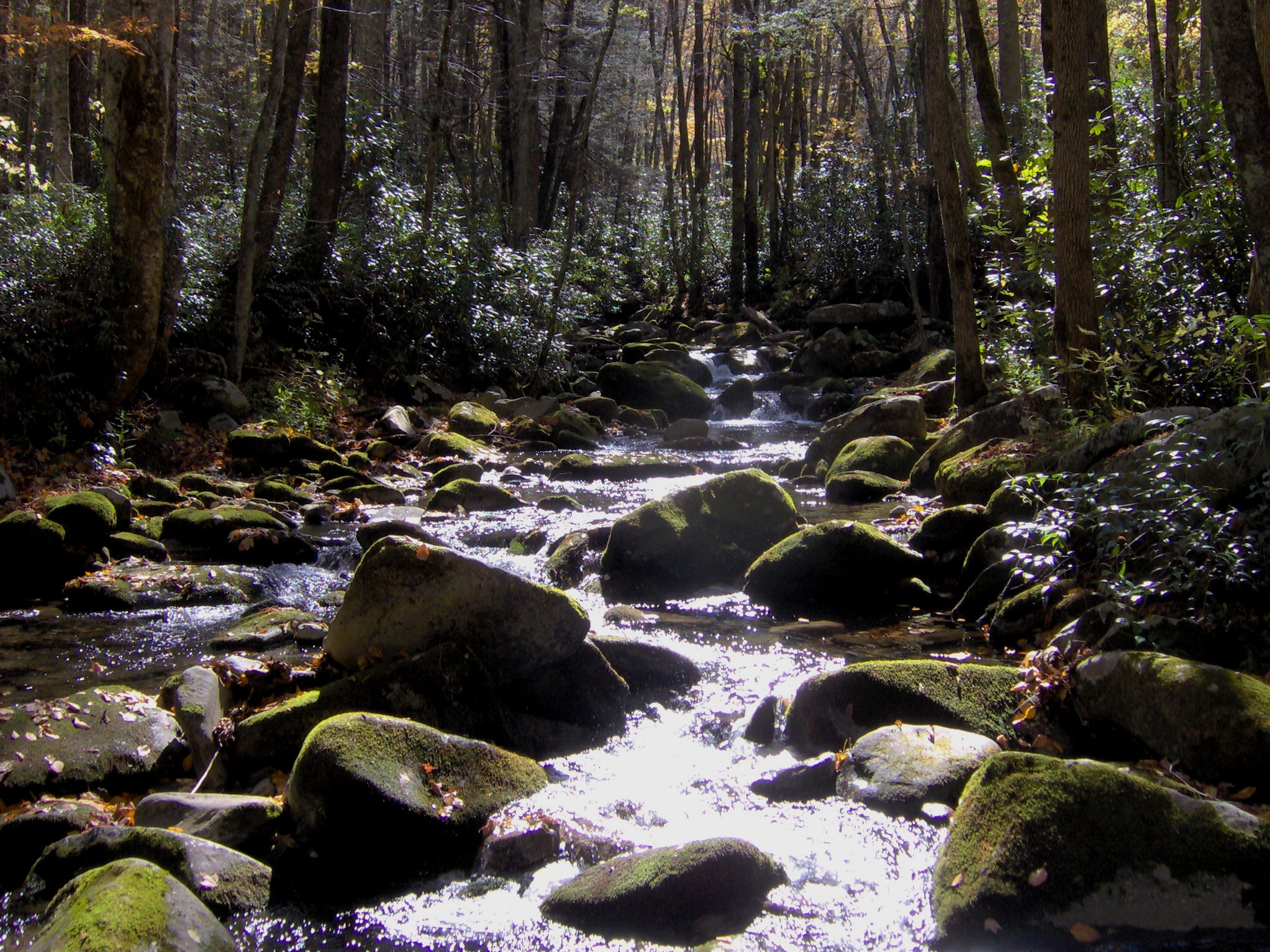
Scenery along the Little River Trail. Photo: Brian Stansberry
Little River Trail
Distance: 4.8 miles Elevation Gain: 412 feet Trail Type: Out and back Difficulty: IntermediateThe Little River Trail is a great intermediate hike for the entire family. If you aren’t able to explore the full length of this trail, you can still enjoy hunting for salamanders on the banks of the river or documenting wildflowers lining the trail.
The trailhead for this hike is located in the Historic Elkmont District, which used to be a very popular vacation spot for Appalachian visitors. The town has lots of history, which is another great reason to put it on your list before the remnants of the resort degrade and fade away.
The hike itself is a great choice throughout the summer and fall, but it actually attracts many visitors during the spring as well. If you visit from late May to early June, you can bear witness to the world-famous synchronized fireflies of Elkmont.
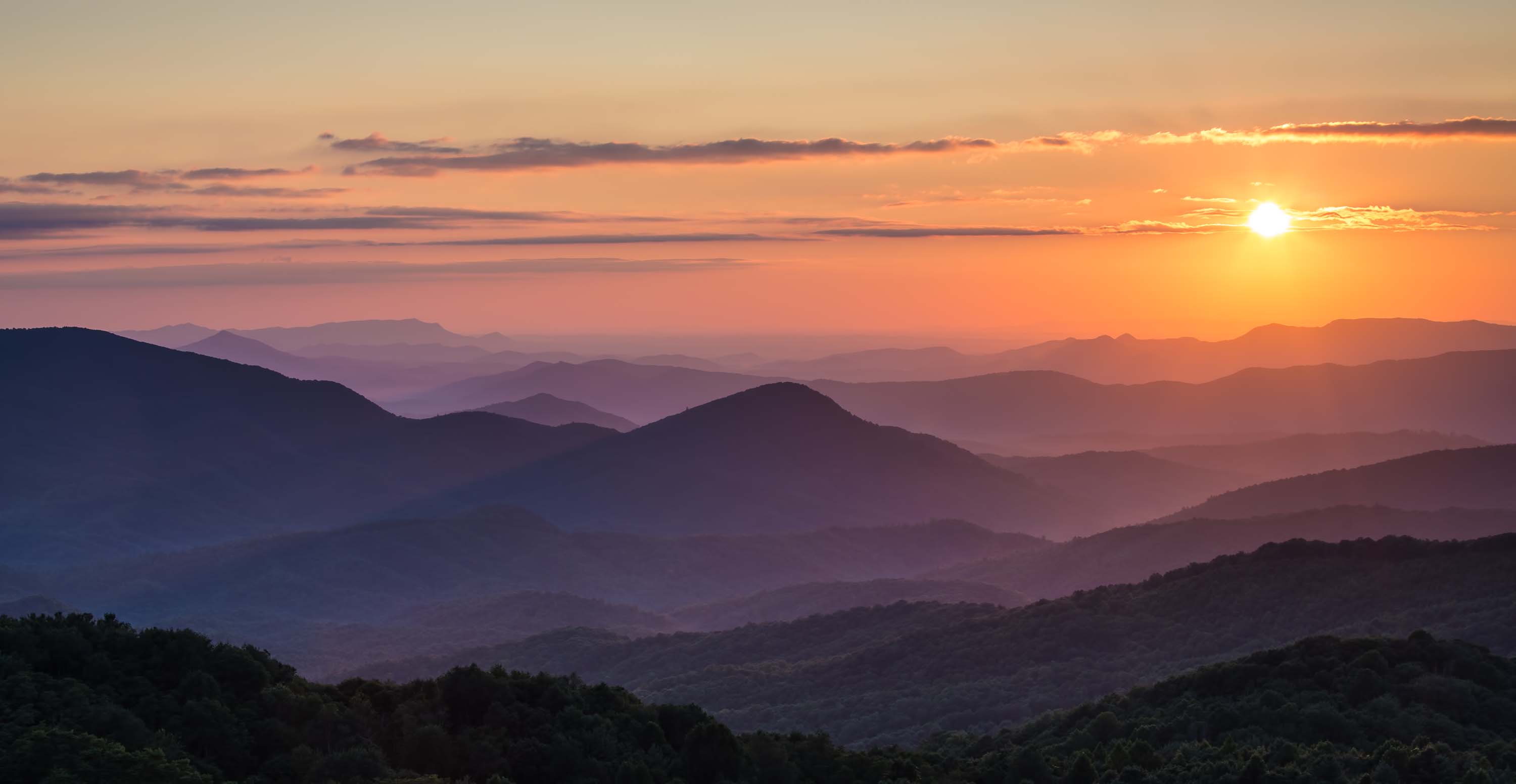
View of the Sunset over the Appalachian Mountains from Rocky Top. Photo: Getty Images.
Thunderhead Mountain and Rocky Top
Distance: 17 miles Elevation Gain: 3,639 feet Trail Type: Loop Difficulty: HardNo trip to the Great Smokies would be complete without summiting Thunderhead Mountain and good-ole Rocky Top along the way. The latter is actually a sub-peak (aka ‘false summit’) of Thunderhead Mountain, which sits at an elevation of 5,527 feet.
The cool part about this trail is that it makes a complete loop so you can continue to enjoy new scenery along the entire route. The longer length of this trail also makes it a popular choice for a multi-day backpacking trip in the park.
Thunderhead Mountain is coined for the often unpredictable weather that is common to the Smokies. So if you do opt for this trail for a backpacking trip, just make sure you are equipped with rain gear and have permits to camp at a location like Spence Field Shelter.
Good Sam RV Parks Near Great Smoky Mountains National Park
While there are options in the park for multi-day backpacking trips, every hiker enjoys coming home to a comfortable base camp at the end of the day. So here are a couple nice Good Sam RV Resorts close to the park.
Twin Creek RV Resort
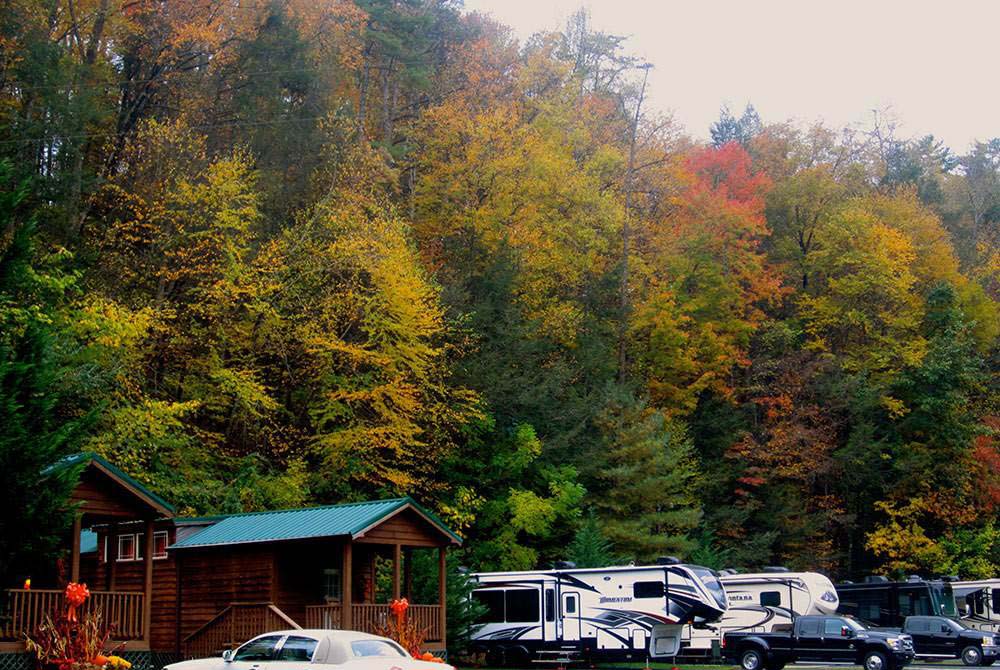
Twin Creek RV Resort.
Twin Creek RV Resort is the best option if you want to be close to downtown Gatlinburg. It boasts a total of 85 full-hookup sites and offers WiFi throughout the park. Some of the park’s best amenities include a heated pool and hot tub, laundry services, and a camp store. But this park’s best attribute is its proximity to town and the main entrance to the national park.
Stonebridge RV Resort
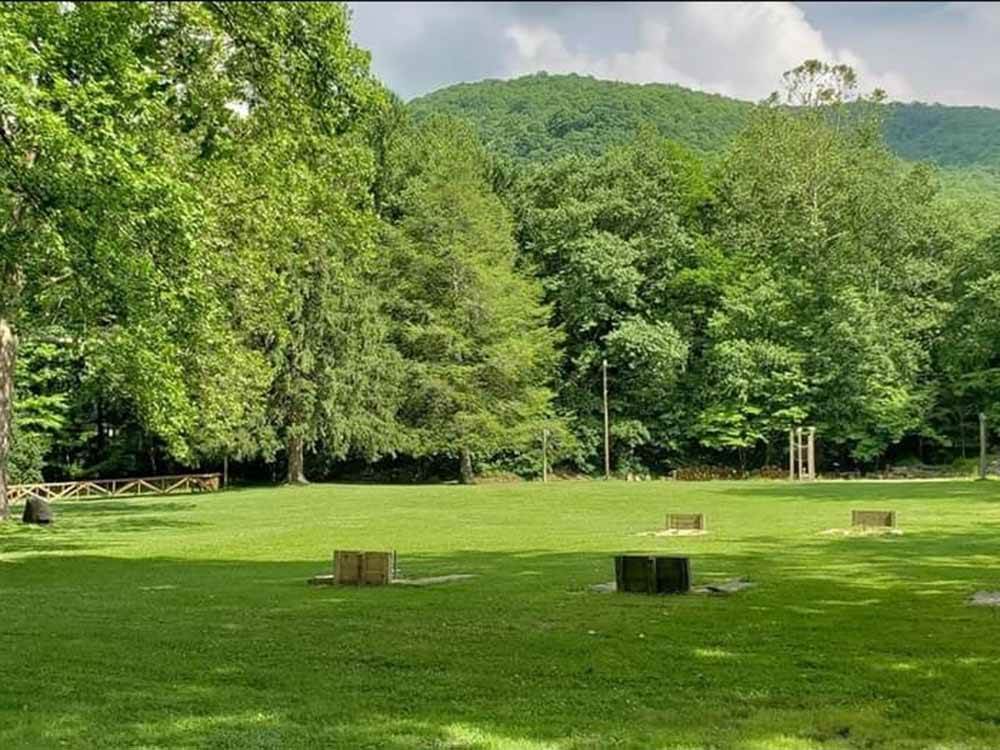
Horseshoe pit at Stonebridge RV Resort.
Stonebridge RV Resort is located on the other side of the park in Maggie Valley, North Carolina. It sits right on the banks of Jonathan Creek and offers a total of 130 full-hookup sites with WiFi. Aside from being able to swim in the creek, the park also offers a swimming pool, recreation hall, and outdoor games for evening activities. It is also just under 40 minutes from Asheville and 35 minutes from the Oconaluftee Visitor Center at the south entrance to the national park.
Misty Mountain Hikes
If you have never visited this area, it is definitely worth adding to your bucket list. The terrain can be demanding, but the views are worthwhile and the nearby towns of Gatlinburg and Pigeon Forge provide fun for the whole family between your hiking excursions.
We hope that you have enjoyed this brief guide to hiking Great Smoky Mountains National Park. If you have any other hikes that you would highly recommend and weren’t included on our list, we would love to hear from you!
The post Hiking Great Smoky Mountains National Park appeared first on Good Sam Camping Blog.
Copyright
© Good Sam Camping Blog


